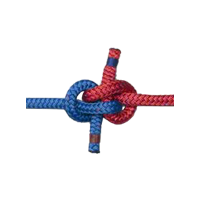Ashley Bend Tying
Form a bight in each rope. Interlock the two bights. Pass each end over itself, under both ropes, and then up through the middle staying close to its own standing end. Tightening naturally rotates each end around the other to finish adjacent to the other standing end - as shown in the side view.

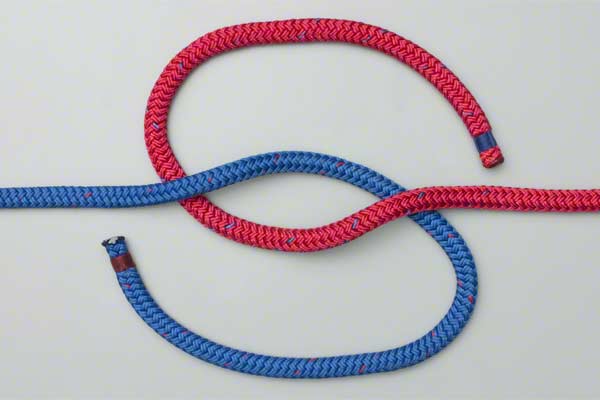
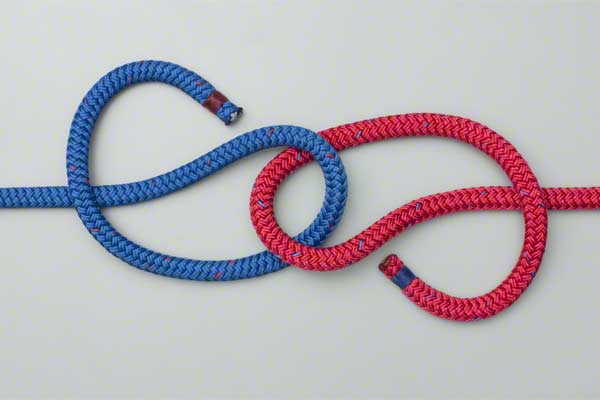
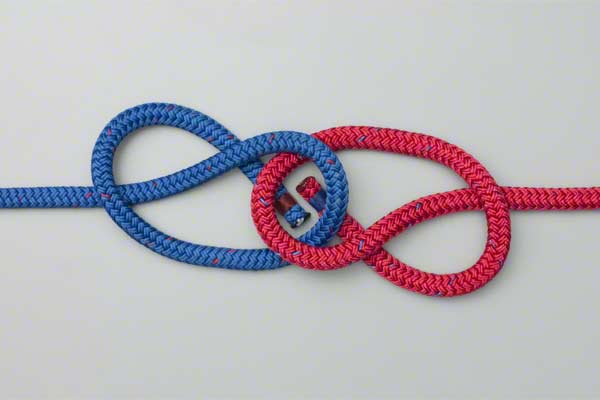


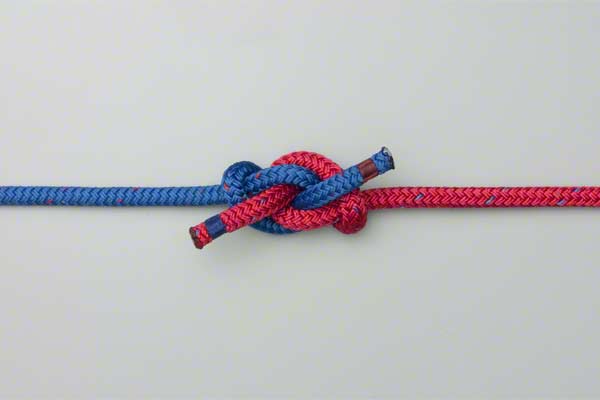
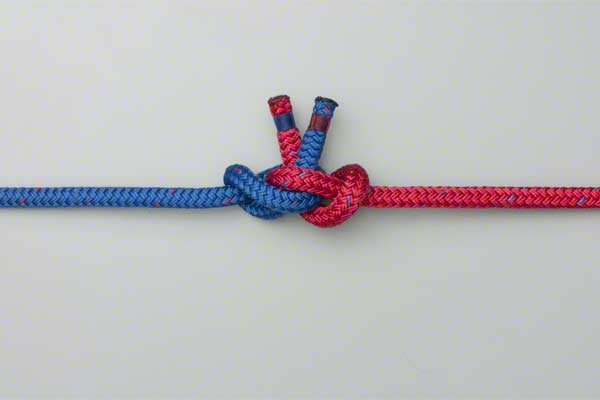
Ashley Bend Details
Uses: The Ashley Bend is the name now given to a knot described by Ashley merely by number (ABOK # 1452). It is one in a family of knots based on interlocking overhand knots. It is used to join two ropes of roughly similar size. Testing by Ashley indicated that it was a reliable knot with very little tendency to slip. It can be hard to untie after being heavily loaded.
Similar Knots: The Ashley Bend is remarkably similar to several other bends including the Zeppelin, the Hunter's, and the Alpine Butterfly Bend. Essentially these knots employ interlocking overhand knots with the ends threaded through or across the middle. David M. Delaney tested these bends and the Carrick Bend for their tendency to jam. He heavily loaded the knots tied in 1/16 inch braided nylon. Tied the way he employed for the testing, the Ashley and the Hunter's consistently jammed tight and would have had to be cut to release them. The Alpine Butterfly Bend, the Zeppelin, and the Carrick could all be untied easily using fingers and fingernails.
Tying it: The arrangement of the interlocking loops and the path of the ends through the center are critical. To minimize the risk of jamming, the ends should be arranged as shown and observed during tightening to ensure that they rotate to remain adjacent to the other standing end.
Choice: The similarity to other bends employing interlocking overhand knots invites confusion - and mistakes. We recommend the Zeppelin because it resists jamming and the Alpine Butterfly Bend because, uniquely, it is tied easily by wrapping the rope round the hand. The Ashley tends to jam and offers no unique advantage to justify its use.
Knitting: The very feature which is a disadvantage in rope, is highly desirable when knitting. Both the Ashley and the Hunter's make excellent knots for joining two ends when knitting. The last thing you wish to see is your product unraveling.


